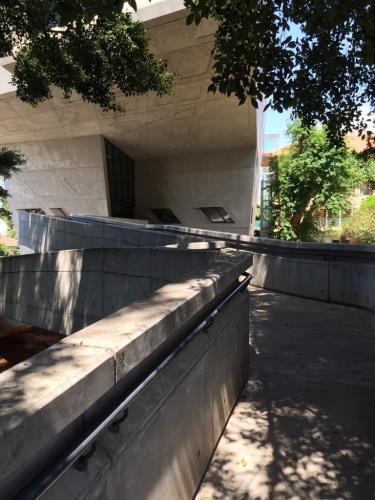Yap loves design, travel and everything beautiful in life. He writes for various media about travel and design and has published works, including Wander Bhutan and Myanmar Odyssey. Formerly publisher of Lonely Planet (China Office), Yap is now Chief Content Officer of Youpu Apps, a Beijing based travel app company.

Beirut is more international than I thought. Located in the Middle East, the city is home to both Christians and Muslims, and each of them consists of 50% of the population. Even if you visit the city during the period of Ramadan, most restaurants are still open for business. Over the last 20 years, Lebanon’s political situation has become more stable (though it is seriously affected by the turmoil in Syria recently). People in exile have made their return to the country and they have also brought back home the trendiest ideas from Europe and America. I dined in the very famous restaurant Lisa in the city. The décor of the restaurant is very fashionable and can definitely be highlighted in any design magazines. The female owner of the restaurant started in Paris first, and then she opened a branch in her home town Beirut next.
I am interested in design so I started looking for contemporary design in Beirut. Beirut Design Week ended in mid-May. I am sure that if Beirut has the ability to hold the event, it definitely has many fun and new designs.
The architectural styles in the city are a mix and match. This is like a reminder that this city has been tormented by horrible wars, which has given rise to the increasing number of vacant land. Designers are therefore given opportunities to make good use of the land. Buildings with different types of designs rise from the ruins, as if they are showing people in Beirut a bright future. Many of those buildings are designed by famous architecture firms. For instances, Herzog & de Meuron Architekten (which in charge of the design of the Beijing National Stadium too) designed the Beirut Terraces and it has become the most expensive residential buildings. With different layers and platforms, the building looks very avant-garde and picturesque. There are also some retro-style buildings and streets in the city. Some of them look very new and it seems that they are trying to revive the Mediterranean ambiance that once permeated the city. Some ruins remain there too. With twenty-odd floors, the building of Holiday Inn still has bullet holes on the walls. It looks like an unfinished building, as if it’s a weird piece of installation art. Standing in the heart of the city, it is a poignant reminder of the horrors of war.
Born in Iraq, the late architect Zaha Hadid once studied in the American University of Beirut, a leading institute in Lebanon. She designed The Issam Fares Institute for her alma mater. Her signature curving lines meander along the hills, and the irregularly shaped windows as well as the geometric design of the buildings are a funny contrast with the old buildings nearby. I was strolling in the quiet campus which is enclosed by the azure Mediterranean Sea to the front and forest at the back. Studying in such beautiful place indeed can stimulate one’s creativity and inspiration.
Lebanon has a number of contemporary designers. Most of the boutiques are located in downtown. Nada Debs is one of the leading female designers in Lebanon. She spends most of her time in Japan so it’s not difficult to tell why her design is full of Japanese touch. For example, the Middle East style bamboo stools and clog-like canvas shoes marry the serenity of the Japanese style and the bustling Middle East style. When the two styles meet it has become a contemporary Lebanonese style. There is also a shop called Homesick not far from Nada Debs’ shop. The designer makes use of secondhand Lebanese fabrics and aluminum cans, and turns them into shabby chic furniture.
People in Beirut have a hedonistic lifestyle, and this perhaps is related to the experience of the wars over the years. They live as if there is no tomorrow, and no one knows what will happen the next day. This explains why nightlife in Beirut is thriving, and live hard play hard is the motto. The most famous nightclub is BO18. The design of the club echoes Beirut’s contemporary history. The location of the club is symbolically significant because it is built on the site of the Palestinian refugee camp. The architect included the chapter of history that people in Beirut are reluctant to remember in the design. On the ground floor the space looks like a tomb. Chairs and stools resemble coffins. The roof of the nightclub is retractable, but when it is closed it looks like a helipad from the bird’s-eye view. Revellers’ spirits are high when the dawn comes, and the roof will be opened accordingly to allow sunlight to fall on those waiting for salvation. They dance fiercely, as if they are so helpless and waiting to be saved. The design of BO18 has been labelled as “war architecture”, and the Wallpaper magazine chose it as one of the best clubs in the world for a consecutive of three years